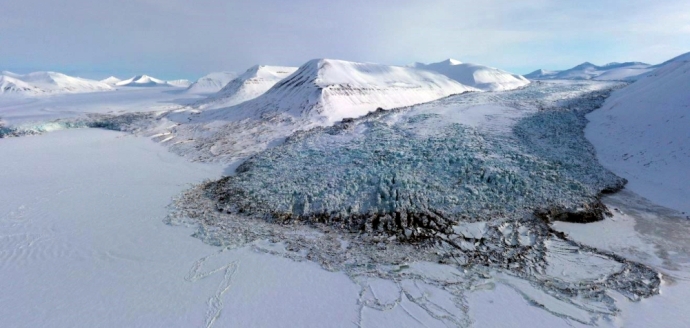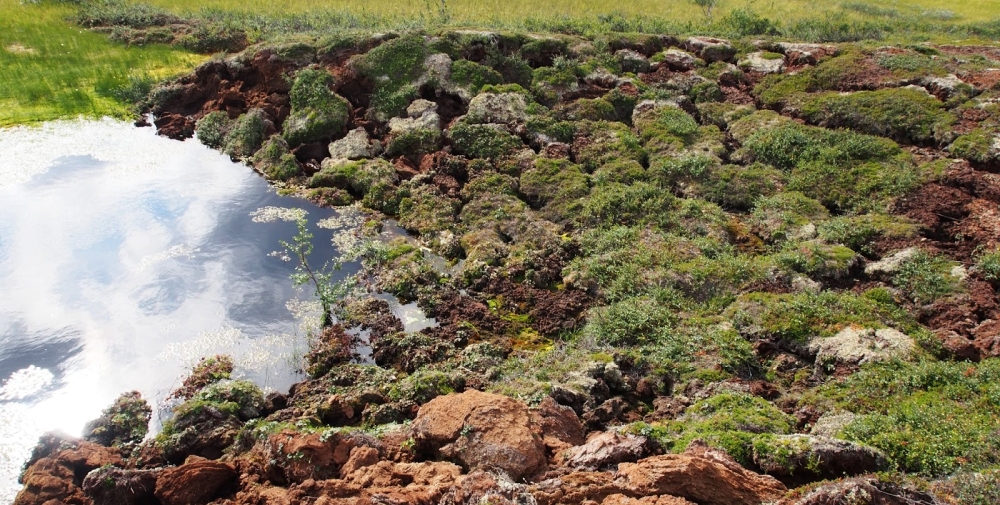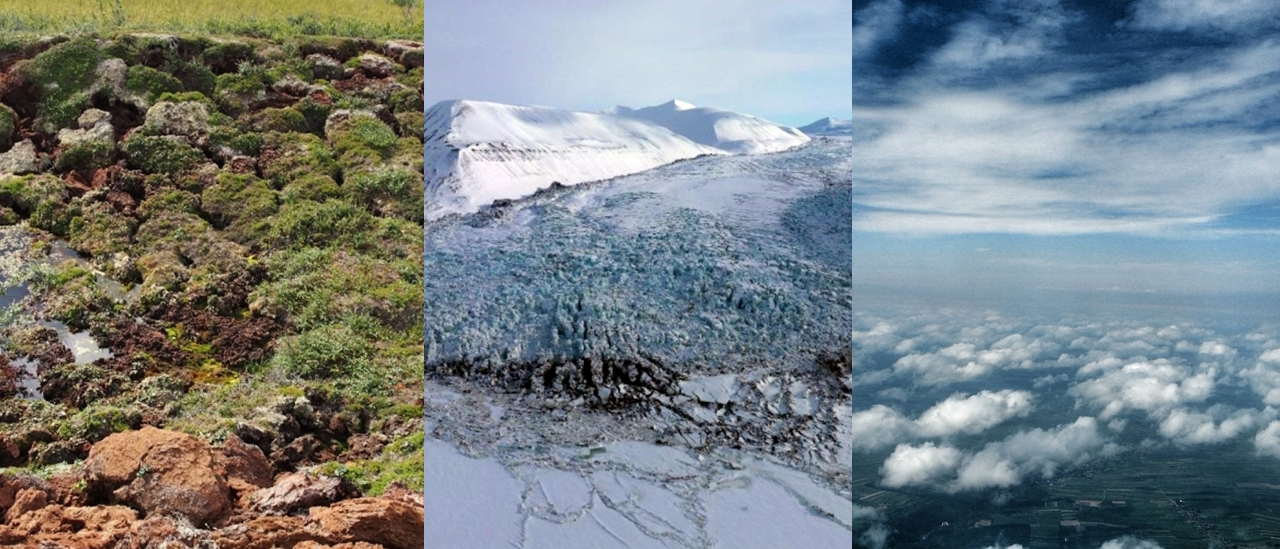About the project
The Arctic is warming much faster than the rest of the world, up to ten times in the Barents Sea region. Facing the fast warming of the Arctic, we need to advance our understanding of abrupt changes in the Arctic and their consequences. The Barents Sea is the region on Earth that exhibits by far the strongest air temperature increase, up to 8 °C over the recent 40 years – that is up to 10 times the global average. This has already set in motion a myriad of widespread and often dramatic changes, including massive reductions in Arctic sea ice, accelerated ice mass loss from glaciers and the Greenland ice sheet and carbon release from permafrost thaw. Shifts in the Arctic energy balance influence global warming.
Melt of ice from glaciers and the Greenland ice sheet have a direct impact on global sea levels. The carbon cycle is perturbed through permafrost thaw and an intensified hydrological cycle – accelerating climate change through release of greenhouse gasses. A number of physical amplifications conspire to make climate change particularly impactful, sudden and visible in the Arctic, rendering it the “early warning system” of Earth’s climate. Besides their common focus on Arctic climate transitions, the three studies in the ACT-Pilot effort are interconnected by a common approach of data-model integration and an overlapping set of data used. The three studies rely on efficient collection, management and analyses of large observational- and model-generated data sets that are difficult to handle for a single project alone.
ACT-Pilot will contribute to a number of UN’s sustainable development goals (SDGs), most directly to: SDG13, climate action: ACT-Pilot contributes understanding and prediction of climate changes necessary to combat these changes and their impacts. SDG14, life below water: Both temperature effects per se, but also indirect effects by changes in precipitation and runoff will affect aquatic ecosystems. SDG15, life on land: Permafrost thaw strongly impacts Arctic land ecosystems and human infrastructure. Glacier changes impact geohazards and travel, not least on Svalbard.
Sustainable development goals (SDGs) adressed in this project

Objectives
The Arctic will likely be sea-ice free at least once within the next 30 years. This has wide-reaching implications for the Arctic, but large remaining uncertainties hinder mitigation and adaptation efforts required to secure a sustainable development in the Arctic region. In the ACT-Pilot project we aim to simulate the concequenses for the warming Arctic. The approach consist of three interconnected studies: (1) on cloud – sea-ice interactions, (2) on rapid permafrost thaw through ground-ice loss, and (3) on ice-dynamic feedbacks on glacier mass loss.
We will collaborate closely with UiO's Center for Computational and Data Science (dScience). Our PhD students will be affiliated with the center and benefit from training opportunities and computational expertise in dScience.
Background
The Understanding climate transitions and limits to sustainability in the Arctic (ACT-Pilot)' project is part of the The Faculty of Mathematics and Natural Sciences’, University of Oslo (UiO)' initiative on sustainability research. The research are hosted by the GeoHyd-section and the Section for meteorology and oceanography (MetOs), Dept of Geosciences.
The research is divided into three studies (doctoral research projects) and the work is mainly carried out by doctoral students supervised by senior scientists in the field, mainly from Dept of Geosciences. The three PhD studies in the ACT-pilot project are:
- ACT-Pilot study 1: Reducing uncertainties in Arctic climate projections through observational constraints on cloud – sea-ice interactions
- ACT-Pilot study 2: Quantifying and projecting rapid permafrost thaw through ground-ice loss
- ACT-Pilot study 3: Are Svalbard glaciers at a tipping point towards irreversible mass loss?

Financing
The name of the project is "Understanding climate transitions and limits to sustainability in the Arctic (ACT-Pilot)". The project is funded by The Faculty of Mathematics and Natural Sciences, UiO for 4 years, with Professor Storelvmo as project leader, and Professors Kääb and Westermann as co-project leaders.
The ACT-Pilot project started in August 2023 with duration to August 2026.
Cooperation
The ACT-Pilot project is carried out as an interdisciplinary research project at University of Oslo, hosted by Department of Geosciences and in connection to the research environment for modelling in natural sciences, the research centre –dScience – Centre for Computational and Data Science. The cooperation consist of:
In addition there will be cooperation with these international partners:
- Max-Planck-Gesellschaft/MPI-Hamburg/ University of Hamburg
- Alfred-Wegener-Institute Potsdam (AWI)
- ETH Zurich
Tools and resources
In the ACT-Pilot project we will combine both satellite laser sounding techniques and the climate change model experiments in The Coupled Model Intercomparison Project, Phase 6 (CMIP6) model experiment package. We will work with data from NASA’s past ICESat mission, the outgoing CALIPSO mission, and in particular the current NASA ICESat-2 and forthcoming ESA EarthCare (launched spring 2023).
In addition we utilize the CMIP6 (Eyring et al., 2016) modelling resources which consists of a large set of common model experiments performed by dozens of state-of-the-art global climate models worldwide. The CMIP6 archive includes, historical simulations initiated at pre-industrial times, as well as a wide range of climate projections driven by different assumptions about future emissions.
